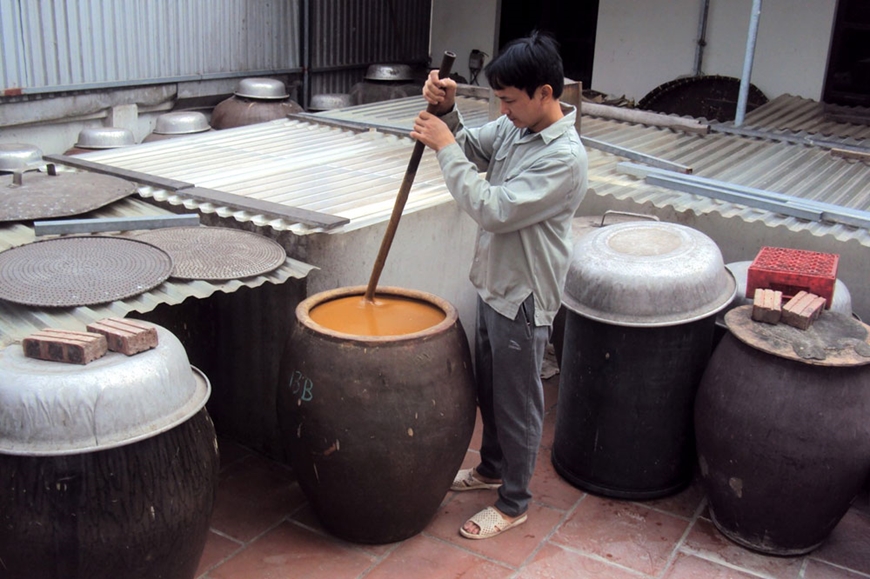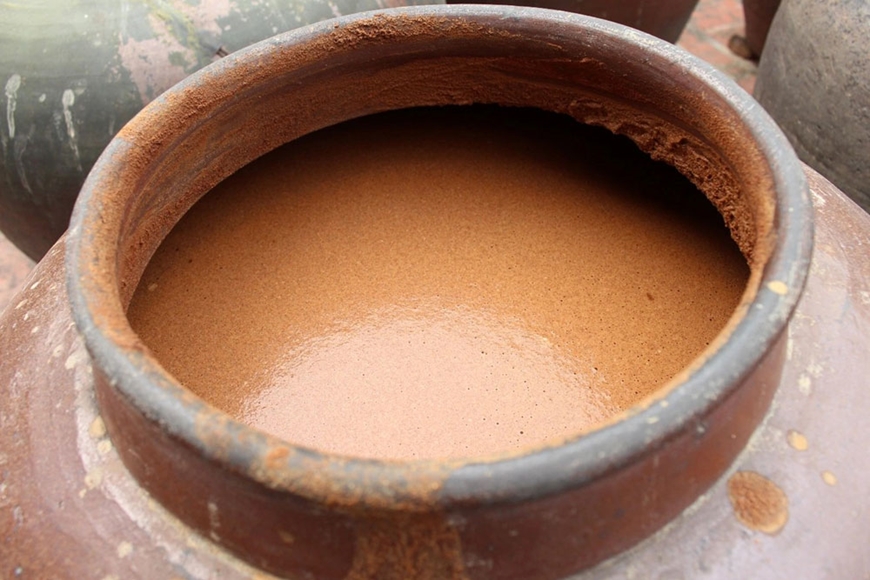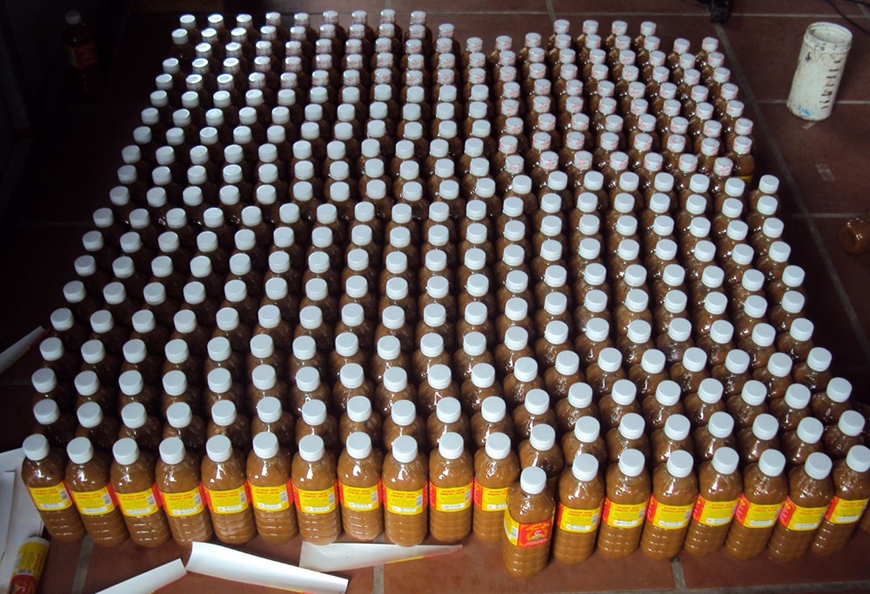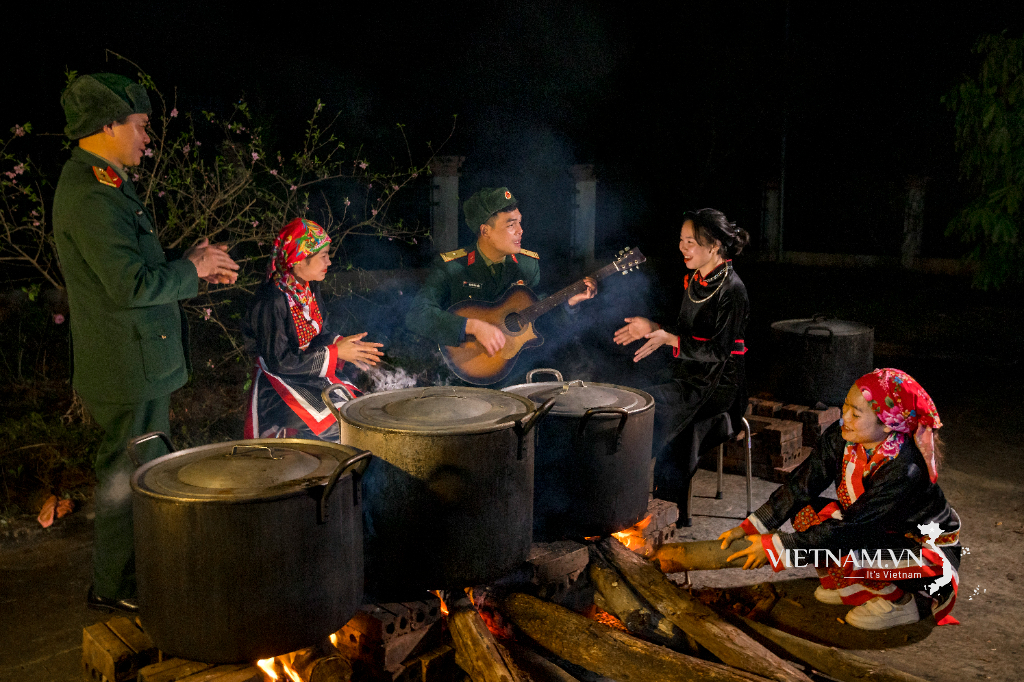About 20km from the center of Hanoi , the ancient village of Cu Da (Thanh Oai district, Hanoi ) still has many typical features of a Northern village. Not only that, Cu Da is also famous far and wide for its traditional vermicelli and sticky rice sauce making.
According to the elders in the village, the soy sauce making profession came first, followed by the vermicelli making profession, but no one knows when it started. It is only known that the soy sauce making profession is as old as the village itself, the ancient village is about 500 years old. For generations, the traditional soy sauce making profession in Cu Da has been a valuable asset left by the ancients.
According to those who work in Cu Da, the difference that creates the unique brand of Cu Da soy sauce is the sweetness and aroma of the soy sauce. Cu Da soy sauce has a naturally sweet taste because to produce the finished product, it must go through many elaborate and meticulous stages.
Tuong Cu Da is made from two main ingredients: sticky rice and soybeans. The sticky rice chosen to cook the soy sauce must be golden sticky rice, not mixed with regular rice. The soybeans must also be climbing soybeans, small grains, light yellow in color.
 |
To make the sauce smooth and colorful, the maker must beat the sauce every day, usually in the morning and at noon. |
The process of making soy sauce also includes two main steps: molding and making beans. Each part is divided into many different stages, the processing is done entirely by hand, without adding any additives. For that reason, Cu Da soy sauce always retains its traditional flavor, which cannot be confused with the flavor of soy sauce from other craft villages.
Mr. Dinh Cong Trong (Cu Da village, Cu Khe commune) shared: “Right from the stage of selecting ingredients, everything must meet the standards. Sticky rice will be steamed into sticky rice, then incubated with mold and salt. Beans will be washed, dried, roasted, then ground, crushed and poured into jars. When the two products are incubated for 20-30 days, they will be mixed together, crushed, and finally dried in the sun for about 5-10 days.”
The Cu Da soy sauce making job has many small steps, so it cannot be without the thoughtful and meticulous hands of women. Although the work is not too hard, to have a good batch of soy sauce, from the work of washing hot sticky rice to drying beans, it requires patience and carefulness. Because, just washing sticky rice unevenly or drying beans at the wrong temperature can very likely ruin a whole batch of soy sauce.
 |
A good batch of soy sauce must have a golden color and rich aroma. |
Ms. Vu Thi Tuyen (Cu Da village, Cu Khe commune) said: "You have to complete all these steps to make 1 liter of soy sauce. The sophistication of Cu Da lies in the mold used to make soy sauce. When the mold is incubated for 7 days and 7 nights and turns yellow, it is mixed with salt and dried."
It seems that for the children of Cu Da, the aroma and sweetness of soy sauce is the flavor of their homeland, which is deeply imprinted in the minds of the children of this hundred-year-old village.
Cu Da people are now facing many difficulties because the demand of customers is no longer high, the land for production is narrowed due to the urbanization process. Therefore, many families have abandoned the traditional soy sauce making profession to work far away or change to other jobs. In the whole village, there are only 5-7 households still doing the profession but in the form of small businesses.
 |
Since 2007, Cu Khe commune has registered the trademark "Tuong Cu Da" with the Department of Intellectual Property ( Ministry of Science and Technology ). |
Although not produced in large quantities, it has always affirmed its solid position in the market. Cu Da soy sauce will continue to grow and there will be more and more craftsmen who love and keep the profession, preserving the unique flavor of Thang Long cuisine.
KIM GIANG
Source

























![[Photo] National Assembly Chairman attends the seminar "Building and operating an international financial center and recommendations for Vietnam"](https://vphoto.vietnam.vn/thumb/1200x675/vietnam/resource/IMAGE/2025/7/28/76393436936e457db31ec84433289f72)











































































Comment (0)